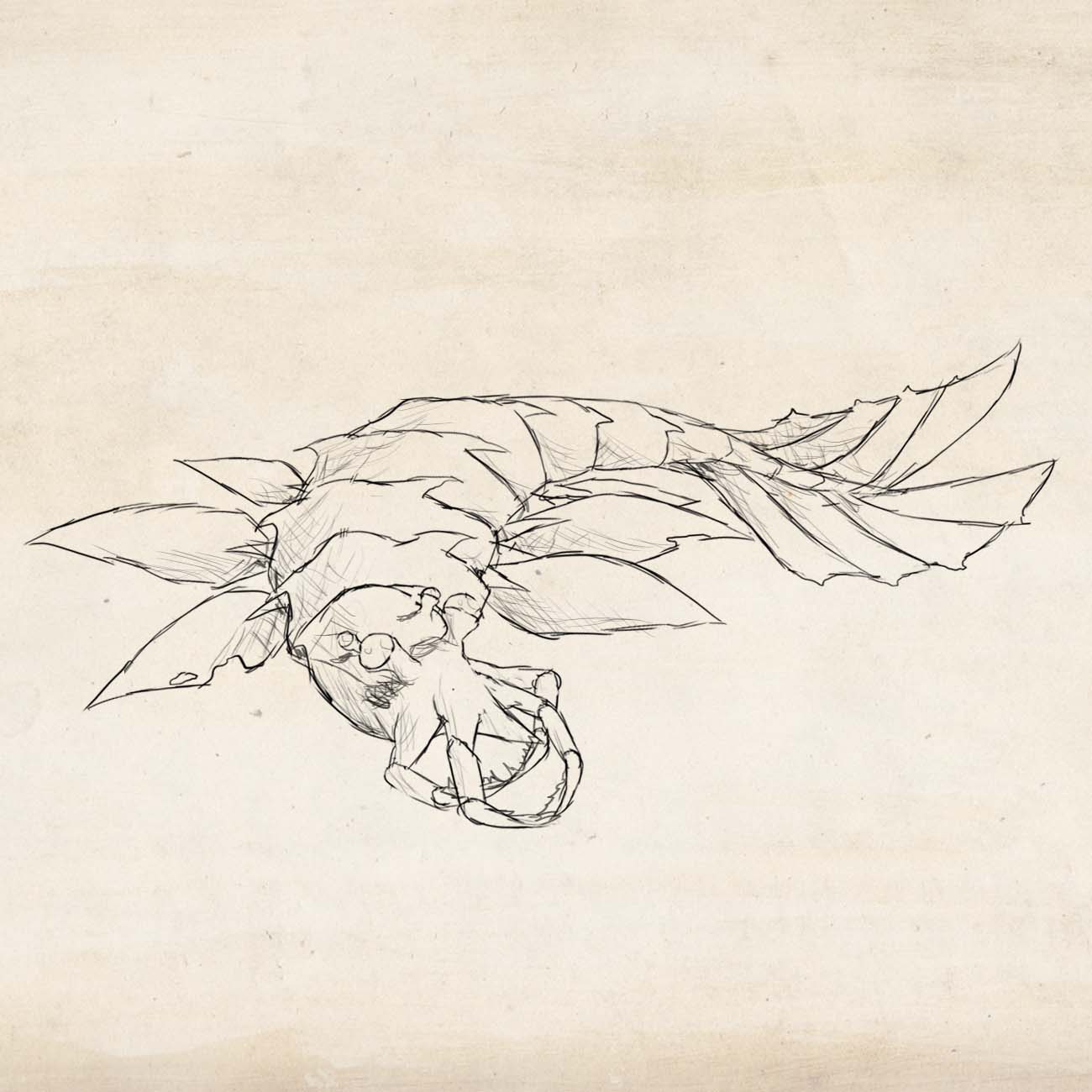Kelp Glider
The Kelp Glider is a large arthropod living in the areas of the Forests dense with plant life. They are able to swim sideways to maneuver through the kelp strands easier, and have a habit of carrying various natural resources from their environment to gift to others of their kind. They are most likely to flee from a threat, but some have been seen using their mouthparts to go on the attack.
Basic Information
Anatomy
The Kelp Glider has a long segmented body with spiked armored plates covering it. The skin flaps that protrude from the sides of its body function as fins, able to move in virtually any direction along with the tail fins. Its head is compact with four eye stalks glowing a bright yellow, and four arms to grab and defend itself with. Adults don't have mouths, as they live off of the food they gained as nymphs.
Genetics and Reproduction
Kelp Gliders will attempt to mate with just about any other member of their species they can find, but will often only choose to do so if the other member is deemed worthy. Kelp Gliders will present each other with materials they find in their environment, such as discarded foliage, animal remains, and shells, so they can create a valid nest for the young. They lay very few eggs in their lifetime, and invest heavily in protecting them. The eggs are also very weak, and need specific conditions to hatch, prompting such high regard for building their nest.
Growth Rate & Stages
Kelp Glider nymphs start out as extremely small creatures that crawl instead of swim, and spend their entire youths consuming as much food as they can, until they get bloated enough that they cannot move. One parent will watch over them as they leave the nest, while the other dedicates themselves to bringing food back to them. After the nymphs have eaten their fill, they'll form a chrysalis around themselves and the parents will leave them as they incubate. The chrysalises will have spines on the outside in order to guard against predators. As juveniles, the newly hatched Kelp Gliders will be able to live off of the food they ate as nymphs, only having to focus on finding a mate.
Ecology and Habitats
Kelp Gliders live in Kelp Forests of the Nightlight Zone, hence their name. As they age, they'll teach themselves how to swim sideways in order to fit between the various plants that surround them, as this will come in handy for escaping danger. They almost never touch the seabed, unless if they are watching over their young.
Dietary Needs and Habits
Kelp Gliders will mostly feed on algae growing on rocks, or in large clumps on the ground, but they'll also eat Red-Tip Kelps and Marine Lilypads. Nymphs will crowd around a food item and consume it without worry of their surroundings, relying on their parents to protect them from above, with some attempting to eat the nest they hatched from. The parents have a habit of stealing food from smaller herbivores, and are able to shrug off most attacks from them.
Additional Information
Perception and Sensory Capabilities
It relies heavily on its stalked eyes, which are positioned on the creature's temples to see from almost all angles. It also relies on smell to some extent, but it is very weak compared to sight, and mainly used as a backup.
Scientific Name
Aegirocassis anemoplias
Lifespan
Unknown
Conservation Status
Endangered
Average Weight
610 lbs.
Average Length
9.2 ft.
Average Physique
Bulky
Body Tint, Colouring and Marking
Dark green or brown skin, glowing yellow eyes
Geographic Distribution
Average
Remove these ads. Join the Worldbuilders Guild










Comments